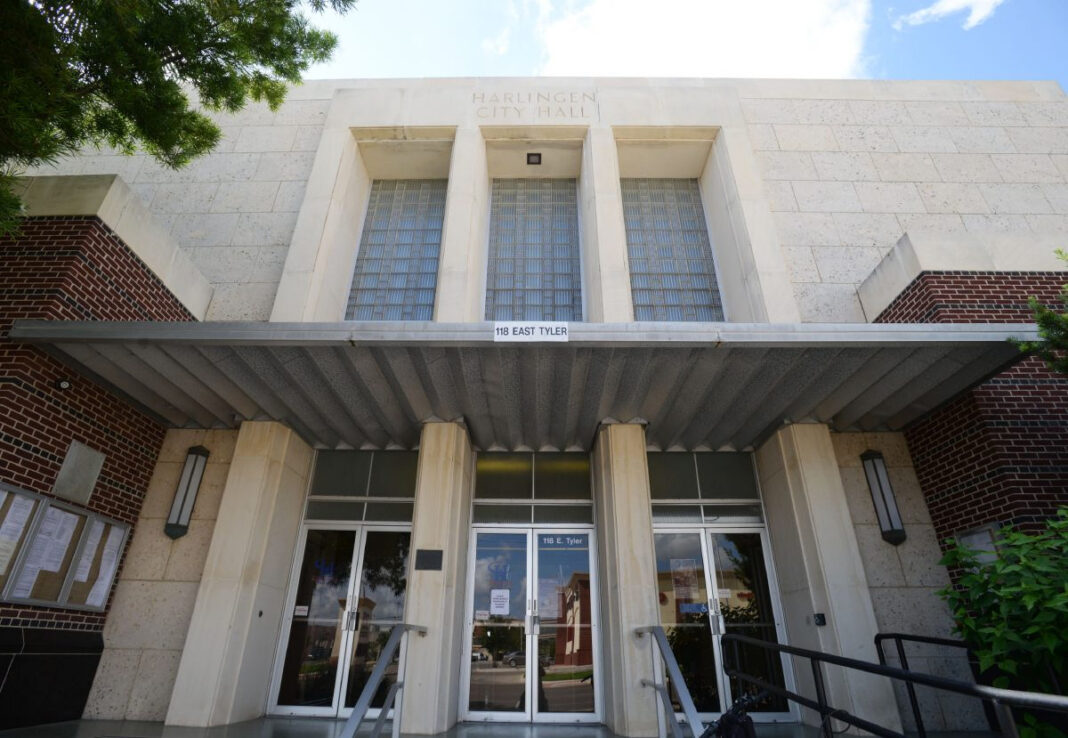HARLINGEN — Questions are popping up around a plan to redraw the city’s five district boundaries after new Census figures drove an 11-percent boost in Harlingen’s population.
Earlier this week, city commissioners held off on the plan to redraw district lines after questioning whether proposed population shifts could impact potential voters.
Now, commissioners are calling for options that could more “fairly” shift population numbers from fast-growing Districts 3 and 5 into Districts 1 and 4, where Census figures show slower growth during the decade in which the city’s total population climbed from 65,074 to 71,829.
“You’re trying to make all the districts almost equally populated,” City Manager Gabriel Gonzalez said Friday.
During a meeting Wednesday, commissioners held off on a request to realign district boundaries after questioning whether newly proposed lines could impact voter numbers.
Meanwhile, Rolando Rios, the San Antonio attorney who helped officials draw up the city’s original five-district map after voters adopted single-member district representation in 2008, couldn’t attend the meeting in which he was set to present two plans.
Now, commissioners are setting a Jan. 4 workshop to discuss Rio’s proposals.
The law calls for the city to complete its district realignment before the May 7 election.
Option 1
On Friday, Commissioner Frank Puente said he’s been requesting a copy of the proposals for six months.
“They want to shove the lines down our throats without reviewing other options,” he said. “We’ve been asking for this information for months and all of the sudden they’ve got something and they want us to vote on it immediately. There are some questionable lines.”
As part of the first of two options, Rios is proposing commissioners shift about 3,482 residents from booming District 5 into District 4 after the new Census showed the west-side district’s population swelled by about 5,000 residents to 17,733 since 2010.
In his plan, Rios proposed shifting the so-called U.S Homes subdivision from District 5 into District 4.
“I don’t like the idea of losing U.S. Homes,” Commissioner Rene Perez, who oversees District 5, said. “There are a lot of voters there. I just want it to be fair.”
Option 2
As part of a second option, Rios is proposing shifting an area north of Wilson Road from District 5 to District 4.
“That’s another highly populated area,” Puente said. “We want (Rios) to explain the layout of each individual district and the make up of it — the demographics.”
Meanwhile, Mayor Chris Boswell described the districts’ realignment as “a pretty simple exercise.”
“What (Rios) had proposed sounds logical to me,” he said. “You’ve got to move some population out and you’ve got to add some population to District 2 and District 4.”
Shifting district populations
The city’s new Census figures are driving the districts’ biggest population shifts since they were mapped out more than 13 years ago.
Census figures show District 5, running along the city’s west side, picked up the biggest population boost, pushing its total numbers to 17,733, according to Rios’ proposal.
Growth also swept across District 3, with 14,757 residents, and District 1, with 14,135 residents.
Meanwhile, growth remained stable across much of Districts 2 and 4.
In his proposal, Rios described each district’s “ideal” population as totaling 14,366 based on the new Census that sets the city’s population at 71,829.





